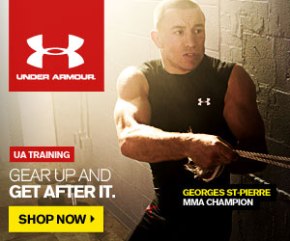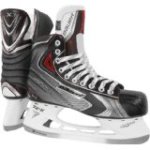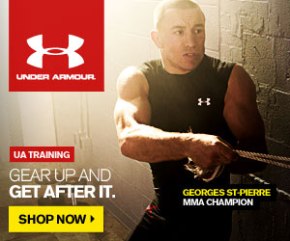The Deals on http://snipersskateshop.com are scary. Did you know that our Merchant Links offer YOU thousands of sports products? Ringette and Hockey Gear. Just take a look and you will be amazed at the money you can save. Oh, by the way…Happy Halloween.
Monthly Archives: October 2013
Red Wings end skid, Vancouver’s winning streak
Wednesday Drill of the Week: Forecheck Game
Small Area Game this week:
Two teams in two different colors. Nets across from each other at the back of the circles (with enough room to skate behind. A puck is dumped in to one corner or the other (behind the net, corner, etc). Three players from each line leave on the dump. Players have to skate behind the OPPOSITE net from where the puck is dumped. Players are trying to score on the net that is CLOSEST to their line (as opposed to the standard far net). In this diagram, the “Os” are attacking the bottom net and the “Xs” are attacking the top net.
The team that retrieves the puck should always be trying to “break out” from their end and attack the far net. The team that has to skate the farthest then is in a “forechecking” situation. This is a great game to work on…
View original post 28 more words
Skate Sale on Amazon.com
Great Deals on all things Hockey on Amazon.com and http://snipersskateshop.com. See our link on our homepage.
Bauer Vapor X60 Junior Skate 2013…$159.99
You Ain’t See ‘Nothin yet. Amazon has over 3000 products that you can access via our site: http://snipersskateshop.com
New This Fall Season
Oilers saying the ‘right things’ but they continue to lose
Playing to Win vs Playing to Stay in the Lineup
Every team that plays a competitive sport needs to have depth on their roster. Throughout the course of the season anything can happen that teams need to be prepared for, including injuries and illnesses. Depth also allows coaches the biggest leverage point, playing time.
Every player on a roster needs to perform come game time. Players that are on the bubble for playing time often feel as though they need to make an impact on the game in order to have a chance to stay in the lineup. This results in players trying to do too much, playing outside of their ability level, and often playing in an out of control fashion. Rather than doing the little things that will help a team win, bubble players often do things that are harmful to the team in their immense effort to stay in the lineup.
Players who play to win are…
View original post 135 more words
21/10/13 – Resistance Training
Skate Facts and Tips.
Choosing the Right ROH
-
Since the recommended Radius of Hollow varies among different classes of skaters, choosing the ROH is matter of trial and error. For example, National Hockey League players tend to favor an ROH between 1/2-inch and 5/8-inch to achieve the appropriate balance between maneuverability and acceleration. Figure skaters, on the other hand, tend to prefer better glide. This calls for an ROH of 1 inch or higher. The recommended ROH for beginners and recreational skaters is usually between 5/8-inch and 3/4-inch.
The Grinding Wheel
-
Each pass of a blade over a grinding wheel results in wear to the stone. Out-of-shape grinding-wheel profiles will result in an uneven bite angle and unmatched outer blade edges. Dress the grinding wheel with a diamond stylus after sharpening two to three pairs of skates. Adjustable tolerances on the dressing gauge will allow you to apply the correct ROH to the stone. Use different diameter wheels for each ROH.
Read more: http://www.ehow.com/list_6820784_skate-sharpening-tips.html#ixzz2j4AcGRqN
Goalie Skating.
You need to check out my twitter page @snipersskate and read up on various hockey drills for players and keepers. Coaches need to get their goalies/keepers involved in practices; skating drills, and puck handling. Also—for some points on skate sharpening—most keepers are going with a deeper radius of hollow: 3/8ths to 5/8ths as opposed to the inch and one-half. It depends on your style of play. For you goalies out there who have the narrower blades eg. 2/9 to 3/0 mm., you may want to try the 1/2 to 3/8ths—you will get more bite or traction or grip on the ice to make the transition from the flop position to your thrust or push across the crease.






